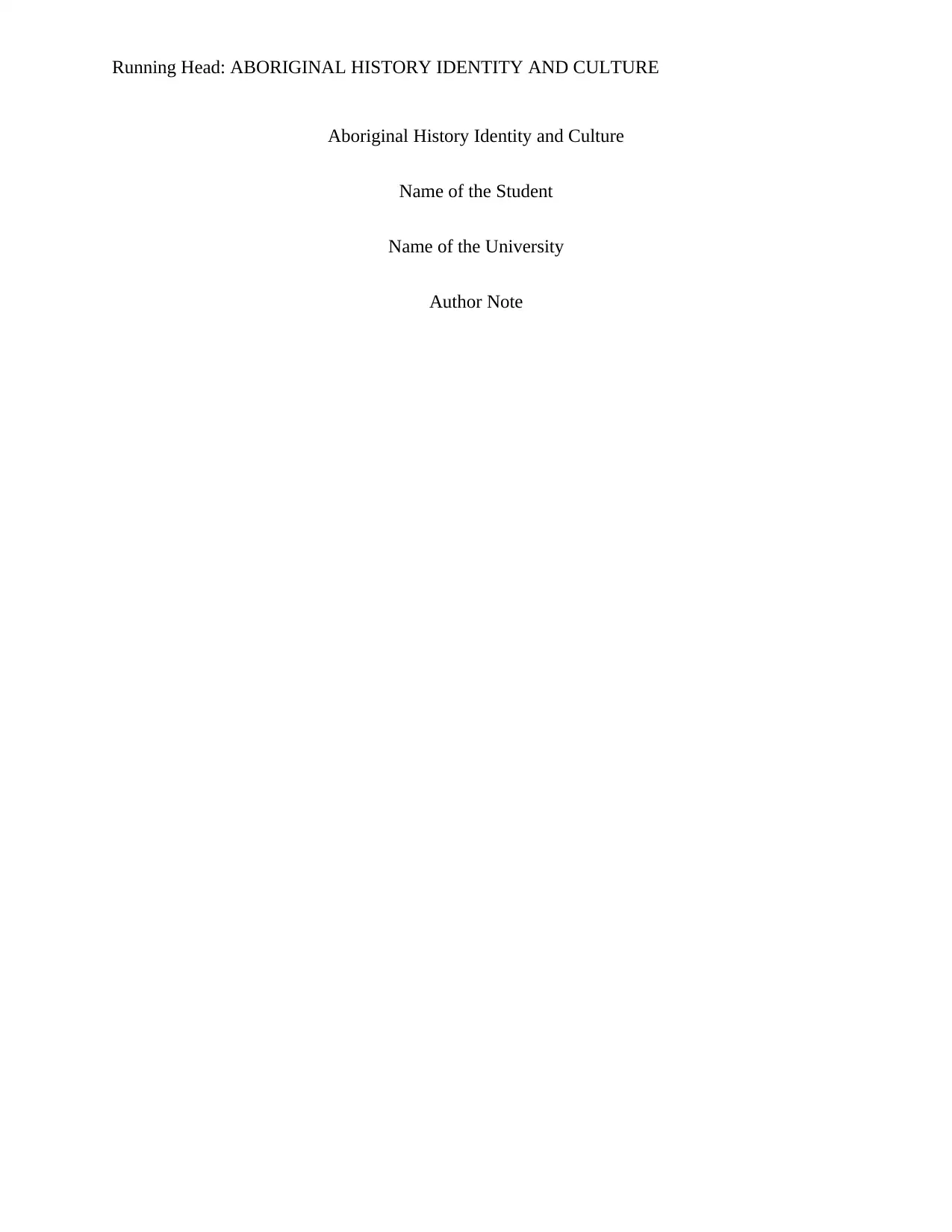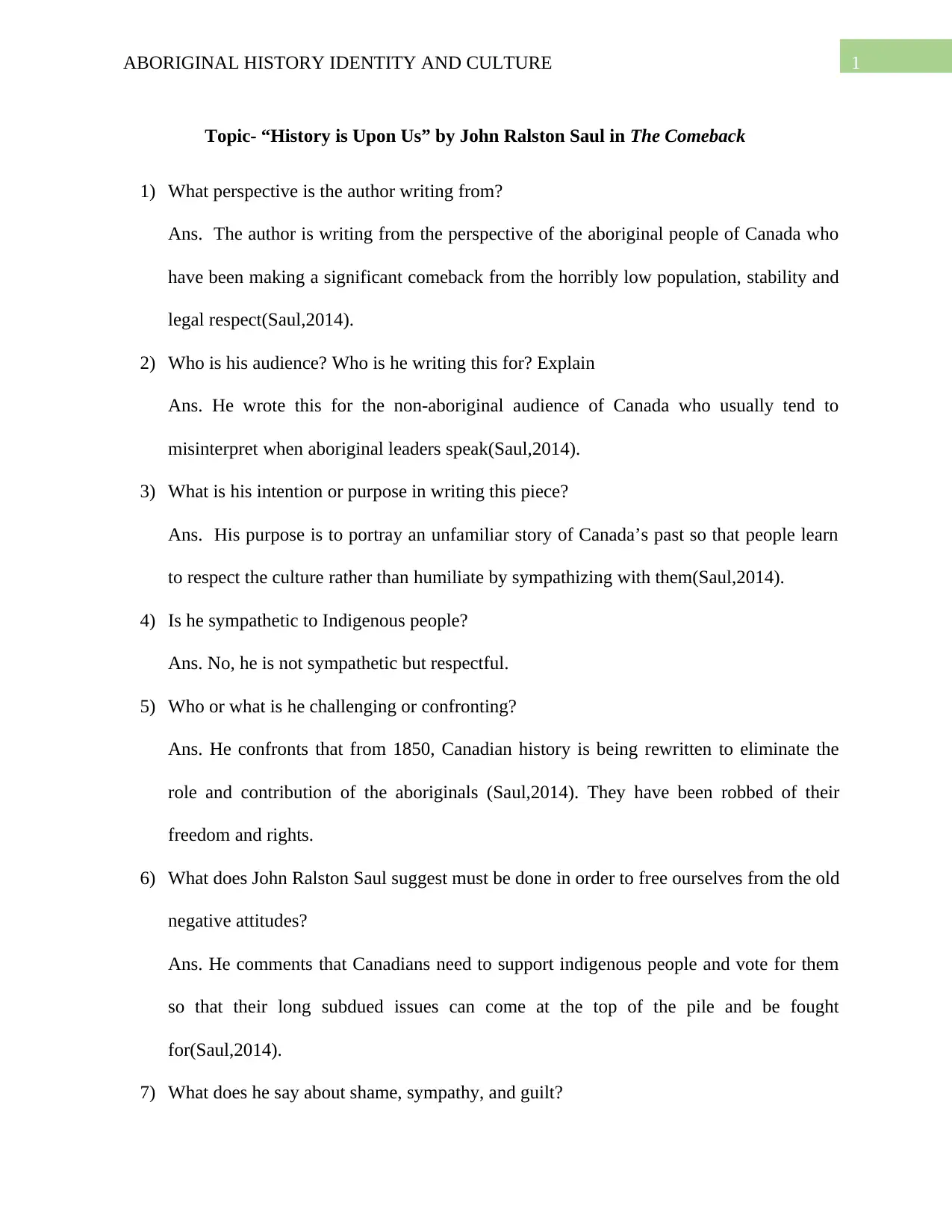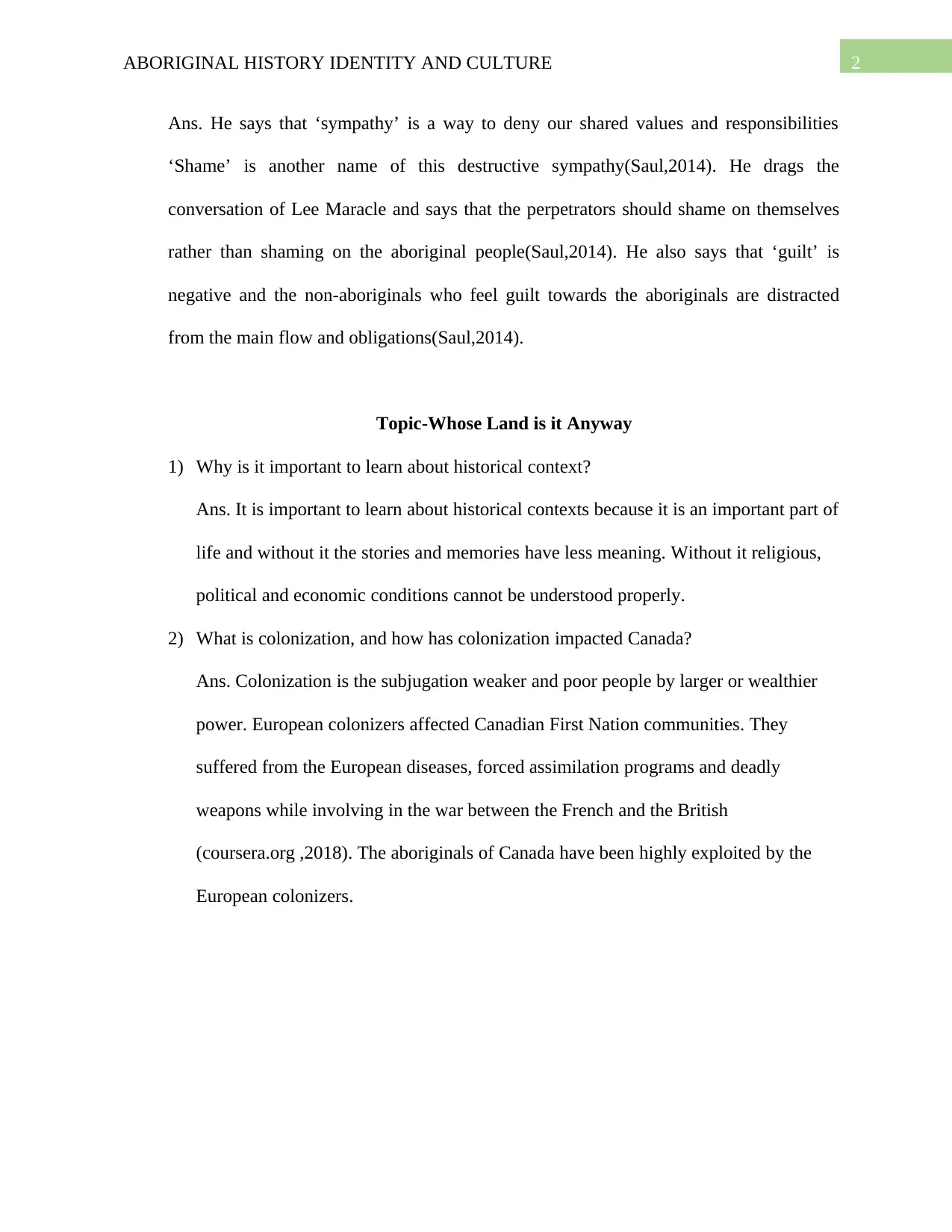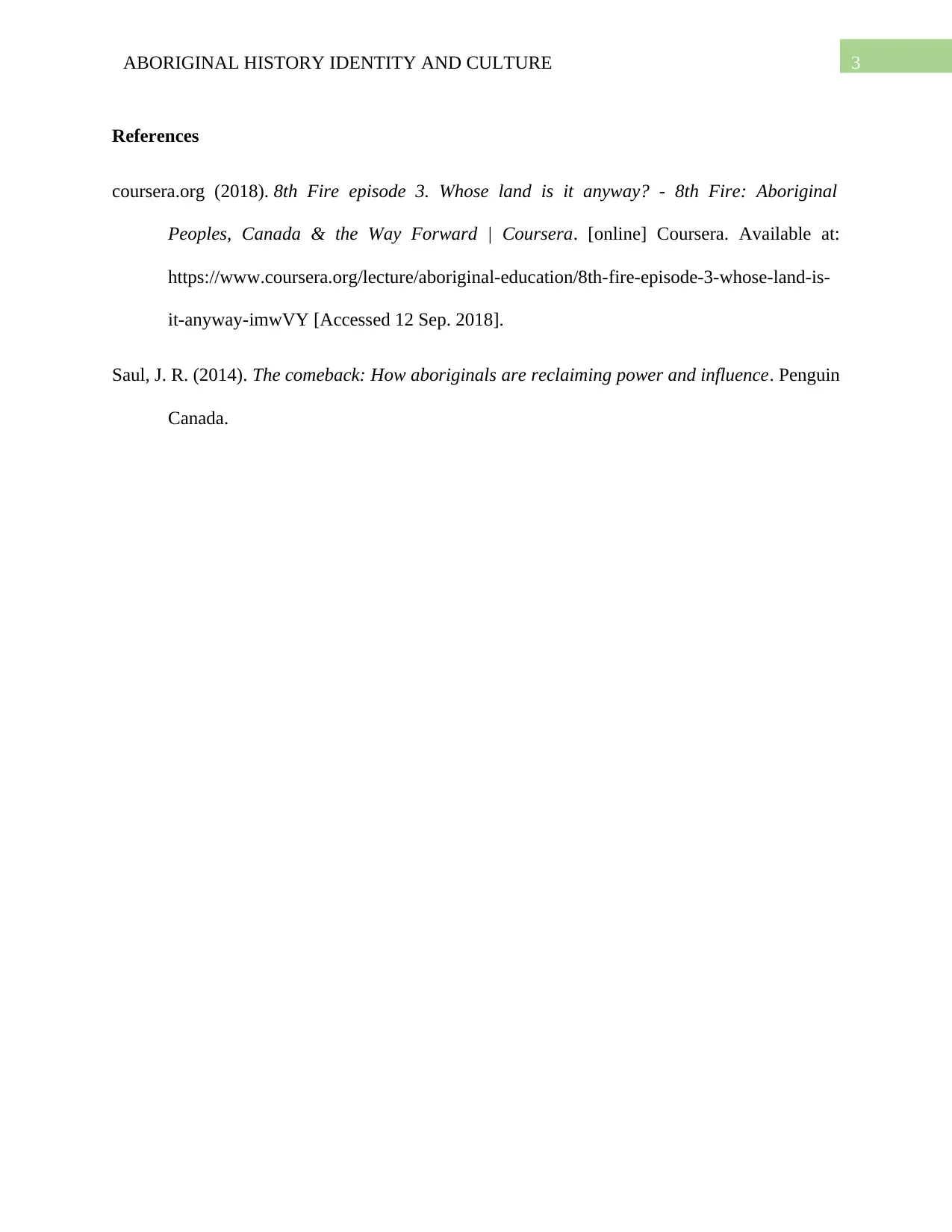Aboriginal History, Identity and Culture: Assignment Analysis
VerifiedAdded on 2023/06/07
|4
|627
|370
Homework Assignment
AI Summary
This assignment delves into the history, identity, and culture of Aboriginal peoples in Canada. It analyzes John Ralston Saul's perspective in 'The Comeback,' exploring his intended audience, purpose, and challenges to historical narratives. The assignment examines the impact of colonization on First Nations communities, emphasizing the importance of understanding historical context. It addresses key questions about colonization, including its effects on Canadian Aboriginals. The student's responses provide insights into the author's views on shame, sympathy, and guilt, as well as the importance of respecting Indigenous cultures and supporting their rights. The assignment draws on the Coursera resource 'Whose Land is it Anyway?' to provide context for the historical analysis.
1 out of 4






![[object Object]](/_next/static/media/star-bottom.7253800d.svg)